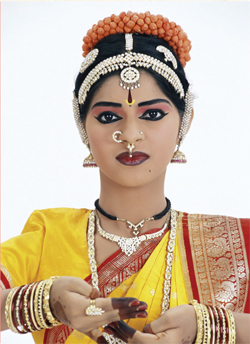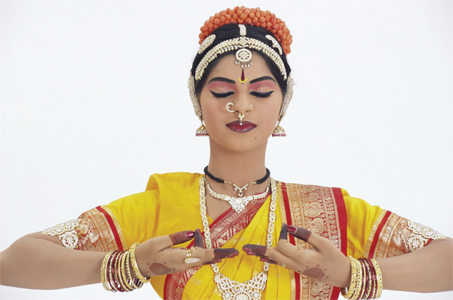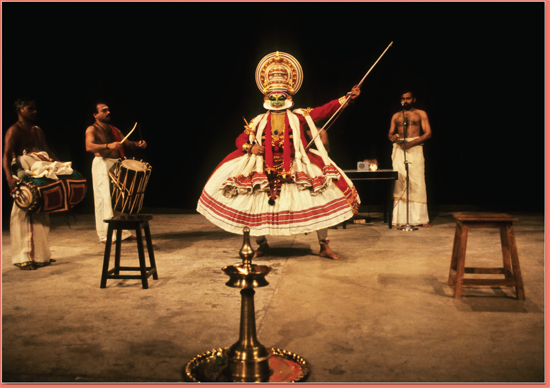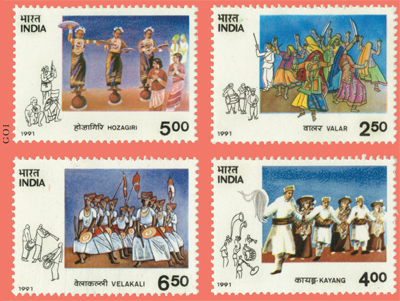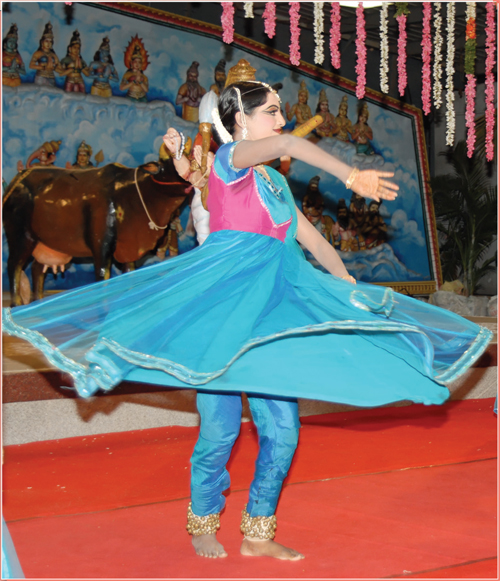KATHAKALI: This dance form from Kerala is famous for its elaborate costumes and makeup, which take hours to apply. The lamp in front is always present (in the old days it helped illuminate the dance). The stools are props used during the performance. The singer in the back is narrating the story. The dance dramas are often taken from the epic Mahabharata. Performances used to run all night, but are now about three hours long.§
In 1991, the Indian Post Office released stamps commemorating four of the country’s folk dances: Valar, Kayang, Velakali and Hozagiri. A 2009 Kathak performance by Chetna Noopur at Noopur Performing Art Centre, Bengaluru.§
- Interpret: Why do you imagine India developed such a rich array of dance forms?
- Discuss: What advantages would watching a religious dance drama have over reading the drama in a book?
- Explain: How do a dancer’s facial expressions and hand gestures help tell a story?
- Analyze and debate: What role does dance play in conveying Hinduism from one generation to the next?



